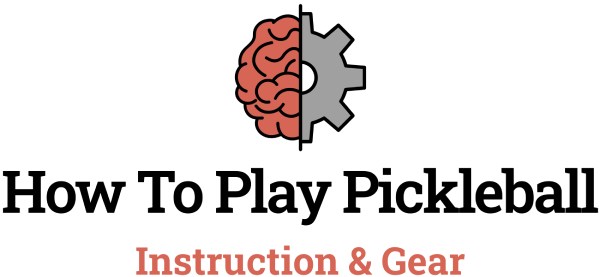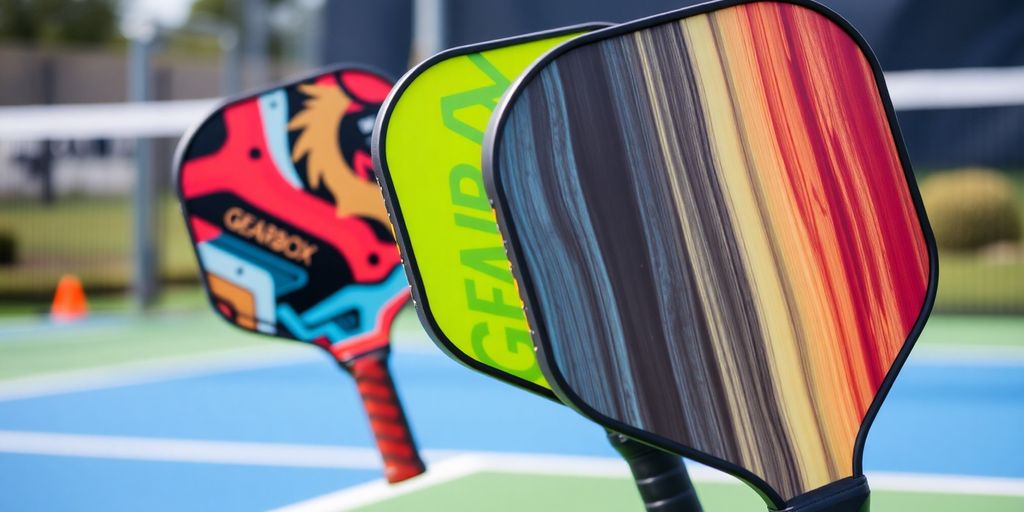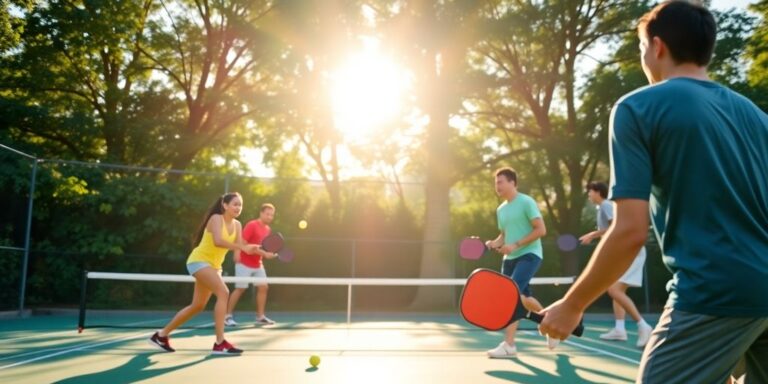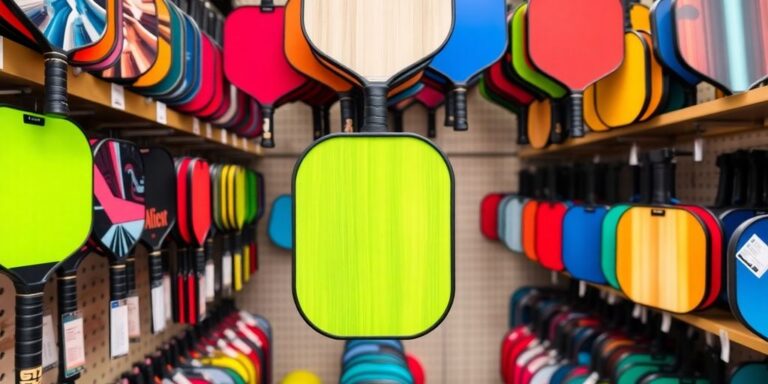Pickleball is taking the sports world by storm, blending elements from tennis, badminton, and table tennis into a fun and competitive game. With its rise in popularity, players are becoming more aware of the importance of their gear, especially the paddles they use. Gearbox pickleball paddles stand out for their unique features and technology that can significantly affect your performance on the court. In this guide, we’ll explore everything you need to know about Gearbox paddles, from their key features to how to maintain them, ensuring you make the best choice for your game.
Key Takeaways
- Gearbox pickleball paddles come in various weights; lighter paddles offer better control, while heavier ones provide more power.
- Material matters: wood, composite, and graphite paddles each have their pros and cons, affecting your game style.
- Grip size is crucial for comfort and control; make sure to choose one that fits your hand well.
- Always test paddles before buying; personal feel can make a huge difference in your performance.
- Regular maintenance of your paddle, including cleaning and proper storage, can extend its lifespan and keep it performing at its best.
Understanding Gearbox Pickleball Paddles
Gearbox pickleball paddles are known for their innovative technology and construction. They aim to provide players with enhanced performance through unique designs and materials. Let’s take a closer look at what makes these paddles stand out.
Key Features of Gearbox Paddles
Gearbox paddles often incorporate features like one-piece construction, which enhances durability and responsiveness. Here are some common features:
- Patented Technologies: Gearbox often uses unique technologies to improve paddle performance.
- Carbon Fiber: Many models utilize carbon fiber for a lightweight yet strong construction.
- Edge Guard: Designed to protect the paddle from impacts and prolong its lifespan.
Gearbox paddles stand out because of their focus on integrating advanced materials and construction techniques. This results in paddles that offer a unique feel and performance profile on the court.
Choosing the Right Paddle Weight
Paddle weight is a crucial factor in determining how a paddle feels and performs. Heavier paddles generally offer more power, while lighter paddles provide better control and maneuverability. Finding the right balance depends on your playing style and preferences. A lighter paddle might be better for quick volleys.
Consider these points when choosing a paddle weight:
- Heavier Paddles (8.0 oz+): Great for players who want more power behind their shots.
- Mid-Weight Paddles (7.5 – 8.0 oz): A good balance of power and control for all-around players.
- Lighter Paddles (Under 7.5 oz): Ideal for players who prioritize control, quick reactions, and reducing strain on the arm.
Material Differences in Paddles
The materials used in a pickleball paddle significantly affect its performance, feel, and durability. Gearbox paddles often use a combination of materials to achieve specific characteristics. The Gearbox GX2 Series uses specific materials to enhance power.
Here’s a quick rundown of common paddle materials:
- Graphite: Lightweight and provides excellent control and responsiveness.
- Carbon Fiber: Offers a great strength-to-weight ratio, enhancing power and durability.
- Composite: A blend of materials that can offer a balance of power, control, and comfort.
The Role of Paddle Technology
Pickleball paddle technology has come a long way, and it really does affect how you play. It’s not just about slapping a ball around; it’s about the science behind each swing. Let’s break down some key areas.
Innovative Designs for Enhanced Performance
Paddle design is constantly evolving. We’ve moved way beyond just a flat piece of wood. Now, it’s all about materials and construction techniques that give you an edge. For example, some paddles use special foam cores to dampen vibration and improve control. Others use advanced composites for more power. It’s a wild world of innovation!
Here’s a quick look at how different materials can affect performance:
| Material | Benefit |
|---|---|
| Carbon Fiber | Lightweight, good control |
| Fiberglass | More power, larger sweet spot |
| Composite | Balance of power and control |
I remember when I first switched to a paddle with a carbon fiber face. The difference was night and day. Suddenly, I had so much more control over my shots, and my dinks were landing exactly where I wanted them. It really made me appreciate how much technology can impact your game.
Impact of Paddle Shape on Play
The shape of your paddle isn’t just for looks; it plays a big role in how the paddle performs. A wider paddle gives you a bigger sweet spot, which is great for beginners or anyone who wants more forgiveness on off-center hits. Elongated paddles, on the other hand, can give you more reach and power, but they might be a little less forgiving. It really depends on your playing style and what you’re looking for in a paddle. If you are a tennis player, you might want to consider paddles for tennis players.
Here are some common paddle shapes and their characteristics:
- Standard: All-around performance, good for most players.
- Wide Body: Larger sweet spot, more forgiving.
- Elongated: More reach and power, smaller sweet spot.
- Teardrop: Combination of power and control.
The Importance of Grip Technology
Don’t underestimate the importance of a good grip! Your grip is your connection to the paddle, and it can affect everything from your control to your comfort. A good grip should be comfortable, absorbent, and provide enough tackiness to keep the paddle from slipping in your hand. There are a ton of different grip options out there, so it’s worth trying a few to see what works best for you. Also, consider the noise produced by the paddle when striking the ball.
Things to consider when choosing a grip:
- Material: Different materials offer different levels of comfort and absorbency.
- Thickness: Thicker grips can provide more cushioning, while thinner grips offer more feel.
- Tackiness: A tacky grip will help you maintain control of the paddle, even when your hands are sweaty.
Selecting the Perfect Gearbox Paddle
Assessing Your Playing Style
Okay, so you’re ready to get serious about your pickleball game and want a Gearbox paddle? Awesome! But before you just grab the shiniest one, let’s think about you. What kind of player are you? Do you like to slam the ball with power, or are you more of a finesse player, dinking and placing your shots with precision? Knowing your style is the first step to finding the right paddle.
- Power Players: Look for paddles with a heavier weight and a smaller sweet spot. These will give you more punch behind your shots.
- Control Players: A lighter paddle with a larger sweet spot will help you control the ball and place it exactly where you want it.
- All-Around Players: Something in the middle is your best bet. A mid-weight paddle with a balanced sweet spot will give you a good mix of power and control.
Testing Paddles Before Purchase
Seriously, don’t just buy a paddle based on what you read online (even this article!). You need to try it out. Most places will let you demo paddles, and some even have trial periods. Take advantage of these! Feel the paddle in your hand, swing it around, and hit some balls. Does it feel comfortable? Does it feel like it’s an extension of your arm? If not, move on. Consider a paddle buying guide for more information.
- Demo Programs: Many retailers offer demo programs where you can try out paddles for a small fee.
- Local Clubs: Ask around at your local pickleball club. Someone might let you try their Gearbox paddle.
- Friends: If you have friends who play with Gearbox paddles, see if they’ll let you borrow theirs for a game.
Common Mistakes to Avoid
Buying a paddle can be exciting, but it’s easy to make mistakes. Here are a few things to watch out for:
- Ignoring Your Skill Level: A super-advanced paddle might not be the best choice if you’re just starting out. Start with something more forgiving and work your way up.
- Focusing Too Much on Price: The most expensive paddle isn’t always the best. Focus on finding a paddle that fits your playing style and feels comfortable in your hand. There are many best pickleball paddles to choose from.
- Not Considering Grip Size: A grip that’s too big or too small can lead to discomfort and even injury. Make sure you choose the right grip size for your hand.
Don’t be afraid to ask for help! Talk to experienced players, read reviews, and do your research. Finding the perfect Gearbox paddle takes time, but it’s worth it in the end. You’ll be playing better and having more fun on the court in no time!
Maintaining Your Gearbox Pickleball Paddle

Cleaning and Care Tips
Keeping your Gearbox pickleball paddle in top condition doesn’t have to be a chore. A little regular maintenance goes a long way. After each game, wipe down your paddle with a slightly damp, non-abrasive cloth. This removes sweat, dirt, and any court debris that can degrade the paddle’s surface over time. Avoid using harsh chemicals or solvents, as these can damage the paddle’s materials. For tougher spots, a mild soap and water solution can be used sparingly. Make sure to dry the paddle thoroughly after cleaning. This simple step will help maintain the paddle’s grip and surface texture, ensuring consistent performance.
- Wipe down the paddle after each use.
- Use a damp, non-abrasive cloth.
- Avoid harsh chemicals or solvents.
Storage Best Practices
How you store your paddle when you’re not playing is just as important as how you care for it during and after games. Extreme temperatures and direct sunlight can warp the paddle’s core and weaken its structural integrity. Always store your paddle in a cool, dry place, away from direct sunlight. Ideally, use a paddle cover or case to protect it from scratches, dings, and other potential damage. Avoid leaving your paddle in your car for extended periods, especially during hot weather. Proper storage will significantly extend the lifespan of your pickleball gear.
- Store in a cool, dry place.
- Use a paddle cover or case.
- Avoid extreme temperatures and direct sunlight.
Storing your paddle correctly is a simple way to protect your investment. Think of it like this: you wouldn’t leave your phone out in the rain, would you? Treat your paddle with the same care, and it will reward you with consistent performance for a long time.
Signs of Wear and When to Replace
Even with the best care, your Gearbox pickleball paddle will eventually show signs of wear and tear. Keep an eye out for these indicators that it might be time for a replacement. Cracks, delamination (separation of layers), and significant dents are obvious signs of damage. Also, pay attention to the paddle’s performance. If you notice a decrease in power, control, or responsiveness, it could be a sign that the paddle’s core is breaking down. Grip wear is another factor to consider. A worn-out grip can affect your control and lead to slippage. While you can replace the grip, significant damage to the paddle itself warrants a replacement. Don’t wait until your paddle completely fails during a game; proactively replace it to maintain your athletic performance and enjoyment of the sport. Consider upgrading to a Pro Ultimate Power 14mm paddle for enhanced stability.
Here’s a quick guide:
| Sign of Wear | Action |
|---|---|
| Cracks or Delamination | Replace the paddle |
| Significant Dents | Replace the paddle |
| Decreased Performance | Consider replacing the paddle |
| Worn-Out Grip | Replace the grip or the entire paddle |
- Cracks or delamination on the paddle’s surface.
- Noticeable dents or damage to the edge guard.
- A significant decrease in power or control during play.
Comparing Gearbox Paddle Models
Overview of Popular Models
Gearbox has a range of pickleball paddles, each designed with specific player needs in mind. You’ve got your power-focused models, control-oriented paddles, and some that try to balance both. It’s worth taking a look at the different series they offer, like the Pro Series or the CX series, to see how they stack up. I’ve found that reading a few reviews and checking out the specs can really help narrow down the options. For example, the best power paddle might be great for aggressive players, while others might prefer something with more finesse.
Performance Differences Among Models
Okay, so here’s where it gets interesting. The performance differences between Gearbox paddles can be pretty noticeable. It’s not just about power versus control; it’s also about the feel of the paddle, the sweet spot size, and how forgiving it is on off-center hits. Some models might have a stiffer feel, which can translate to more power, while others are softer for better control and dinking. The weight and balance point also play a big role. Here’s a quick rundown:
- Power Paddles: Generally heavier, stiffer, and designed for generating maximum ball speed.
- Control Paddles: Lighter, more flexible, and offer better touch and accuracy.
- All-Around Paddles: A blend of both, aiming for a balance of power and control.
Choosing the right paddle really depends on what you’re looking for in your game. Do you want to crush the ball, or do you prefer to play a more strategic, finesse-based game? Answering that question is half the battle.
User Reviews and Feedback
User reviews are gold when you’re trying to figure out which paddle is right for you. I always check out what other players are saying about specific models before making a decision. Pay attention to comments about durability, comfort, and how the paddle performs in different situations. Some players might rave about a paddle’s spin potential, while others might focus on its ability to absorb vibrations. It’s all about finding a paddle that matches your preferences and playing style. Don’t just look at the star ratings; read the actual reviews and see what people are saying about the control pickleball paddles in real-world conditions. Also, keep in mind that everyone’s experience is different, so take everything with a grain of salt.
The Importance of Pickleball Balls

Pickleball isn’t just about the paddle; the ball you use has a huge impact on the game. You can have the fanciest paddle, but if you’re playing with a beat-up or inappropriate ball, your game will suffer. Choosing the right ball can significantly affect your performance and enjoyment.
Choosing Between Indoor and Outdoor Balls
Indoor and outdoor pickleball balls are designed very differently. Indoor balls are typically made of a softer, lighter plastic and have fewer, larger holes. This design makes them less bouncy, which is ideal for the controlled environment of an indoor court. Outdoor balls, on the other hand, are made from a harder, heavier plastic with more, smaller holes to help them withstand wind and other outdoor elements. Using the wrong ball can really mess with your game; an outdoor ball indoors will bounce too much, while an indoor ball outdoors will get blown all over the place. It’s important to choose pickleball balls designed for the specific environment.
Ball Material and Its Impact on Play
The material of a pickleball ball affects its durability, bounce, and overall feel. Most balls are made of plastic, but the specific type of plastic and the manufacturing process can vary. Higher-quality balls tend to be more durable and maintain their shape and bounce longer. Softer plastics offer more control, while harder plastics provide more speed. Consider your playing style and the type of game you prefer when choosing a ball. For example, if you like dinking and soft shots, a softer ball might be better. If you prefer power and aggressive play, a harder ball might be more suitable. The type of material used in indoor pickleball balls is different than outdoor balls.
Maintaining Your Pickleball Balls
Just like any other piece of equipment, pickleball balls need some care to keep them in good condition. Over time, balls can get dirty, scuffed, or even cracked, which can affect their performance. Here are a few tips for maintaining your pickleball balls:
- Clean them regularly: Wipe them down with a damp cloth after each use to remove dirt and grime.
- Inspect them for damage: Look for cracks, dents, or flat spots. If a ball is damaged, replace it.
- Store them properly: Keep them out of direct sunlight and extreme temperatures, which can cause them to warp or crack.
Using worn-out or damaged balls can negatively impact your game and even lead to injuries. Regularly inspect your balls and replace them as needed to ensure consistent performance and a safe playing experience. Investing in high-quality balls and taking care of them will ultimately save you money in the long run and maintain your pickleball gear.
Footwear and Its Impact on Performance
Footwear is often something people don’t think about much when getting into pickleball, but it really matters. You can’t just wear any old sneakers and expect to play your best, or even avoid injury. Let’s break down why the right shoes are so important.
Choosing the Right Shoes for Pickleball
Okay, so what makes a good pickleball shoe? It’s not the same as a running shoe or a tennis shoe, though there can be some overlap. Pickleball shoes need to handle a lot of lateral movement, quick stops, and starts. Here’s what to look for:
- Lateral Support: This is key. You need shoes that will keep your ankles stable when you’re moving side to side. Look for shoes with reinforced sidewalls.
- Good Traction: You don’t want to be slipping and sliding all over the court. Non-marking outsoles are a must, especially if you play indoors. The tread pattern should provide grip without being too aggressive.
- Cushioning: Pickleball can be tough on your joints, so good cushioning is important for shock absorption. Look for shoes with EVA midsoles or other cushioning technologies.
- Breathability: Your feet are going to sweat, so breathable materials are a plus. Mesh uppers can help keep your feet cool and dry.
Importance of Traction and Support
Why all the fuss about traction and support? Well, without them, you’re just asking for trouble. Think about it:
- Injury Prevention: Ankle sprains, knee problems, and even falls can happen if you don’t have the right support and traction. It’s better to invest in good shoes than pay for a trip to the doctor.
- Improved Agility: When you feel confident in your footing, you can move more quickly and efficiently. This translates to better court coverage and faster reactions.
- Enhanced Performance: With proper support, you can put more power into your shots and maintain your balance during aggressive plays. It all adds up to a better game.
I remember playing a tournament last year with some old running shoes. Big mistake! I was slipping all over the place, my ankles were killing me, and I felt like I couldn’t move as fast as I wanted to. I switched to proper court shoes after that, and it made a huge difference. Seriously, don’t underestimate the importance of good footwear.
Caring for Your Pickleball Footwear
So, you’ve got your perfect pair of pickleball shoes. Now, how do you keep them in good shape? Here are a few tips:
- Clean Them Regularly: Wipe them down after each use to remove dirt and sweat. You can use a damp cloth and mild soap if needed.
- Air Them Out: Don’t leave your shoes stuffed in your bag. Let them air out to prevent odors and bacteria growth.
- Replace Them When Needed: Shoes wear out over time, and the support and cushioning will degrade. If you notice that your shoes are losing their grip or feeling less comfortable, it’s time for a new pair. Consider exploring top pickleball shoes for your next purchase.
And remember, wearing running shoes for pickleball is not a good idea. You’ll thank yourself later!
The shoes you wear can really change how well you perform, whether you’re running, playing sports, or just walking around. Good footwear gives you support and comfort, helping you move better and avoid injuries. If you want to learn more about how the right shoes can boost your performance, check out our website for tips and advice!
Final Thoughts on Your Pickleball Gearbox
In the end, having the right pickleball gear can really change your game. It’s not just about having the latest paddle or the fanciest shoes; it’s about finding what works best for you. Whether you’re just starting out or you’ve been playing for years, knowing your gear can help you play better and enjoy the game more. So, take the time to explore different paddles, balls, and shoes. Try them out, see what feels right, and don’t hesitate to ask for advice from other players. Remember, the goal is to have fun while improving your skills on the court!
Frequently Asked Questions
What should I look for when choosing a Gearbox pickleball paddle?
When picking a Gearbox paddle, consider its weight, material, and grip size. Try out different paddles to see which feels best for your playing style.
How do I know what weight paddle is right for me?
Paddles usually weigh between 6 and 14 ounces. Lighter paddles are easier to control, while heavier ones can give you more power. Choose one that feels comfortable in your hand.
What materials are Gearbox paddles made from?
Gearbox paddles can be made from wood, composite materials, or graphite. Wooden paddles are durable and great for beginners, while graphite paddles are lighter and preferred by advanced players.
How can I maintain my Gearbox paddle?
Keep your paddle clean by wiping it down after each use. Store it in a protective case to avoid damage and check for signs of wear regularly.
What type of pickleball ball should I use?
Choose indoor balls for softer play and outdoor balls for durability. Indoor balls are lighter and have fewer holes, while outdoor balls are made to withstand wind and hard surfaces.
What kind of shoes should I wear for pickleball?
Select shoes that provide good support and traction. Look for court shoes designed for sports to help you move quickly and safely on the court.




